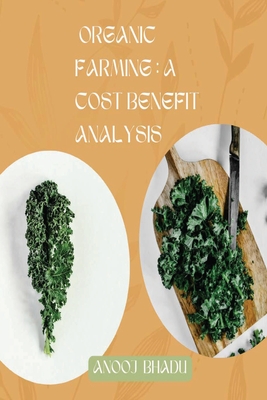You are here
Back to topOrganic Farming: A Cost Benefit Analysis (Paperback)
Description
Organic farming is a method of agriculture that emphasizes the use of natural inputs and techniques to maintain and enhance soil fertility, control pests and diseases, and promote the health and welfare of livestock. Organic farming typically avoids the use of synthetic pesticides and fertilizers, genetically modified organisms (GMOs), and antibiotics and growth hormones in animal production.
Cost-benefit analysis is a method used to evaluate the economic viability of a project or program. It involves comparing the costs of a project or program to its expected benefits, with the goal of determining whether the benefits justify the costs.
When applied to organic farming, a cost-benefit analysis would examine the costs and benefits of transitioning from conventional farming methods to organic methods. The costs would include the expenses associated with acquiring organic inputs, such as compost and organic fertilizers, as well as the costs of labor and equipment needed to implement organic practices. The benefits would include the improved soil quality, reduced environmental impact, and potentially higher prices for organic products.
Research has shown that organic farming can be profitable, particularly for small and medium-sized farms. Studies have also demonstrated that organic farming can improve soil health, reduce environmental impacts, and provide economic benefits to local communities. However, the profitability of organic farming can vary depending on factors such as market demand, farm size, and location.
Overall, a cost-benefit analysis of organic farming would need to take into account a range of factors, including the initial investment required to transition to organic methods, ongoing costs of production, potential yields and quality of organic crops, and the market demand for organic products. By evaluating these factors, farmers and policymakers can make informed decisions about whether organic farming is a viable and profitable option for their operations.
Agriculture has been the backbone of the Indian economy for over ten thousand years, and it has
become a way of life for the vast majority of population. Engagement of
54.56 percent of the population in agriculture and related activities demonstrates the importance
of this sector . Due to the initiation of the green revolution in the 1960s, agriculture industry witnessed a transformation, and India became a food surplus
nation within a decade. However, preserving environment, conserving resource and assuring of
food quality have been the major challenges that were completely neglected during the course.
High yielding variety seeds were created that worked in alliance with substantial amount of
fertilizers and pesticides as well as irrigation system, however this replaced local
varieties and superseded the traditional mechanism; a large gap has been created in
agro diversity as its popularity increased cultivation of wheat and rice only. Heavy
reliance on pesticide made agriculture unsustainable as it brought long term
dispossession and devastation of our ecosystem.
